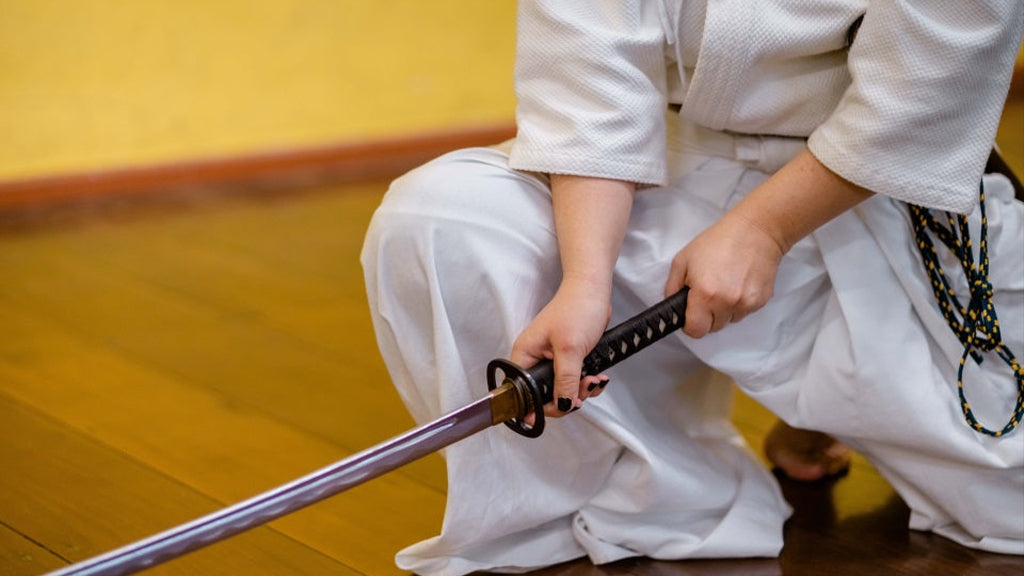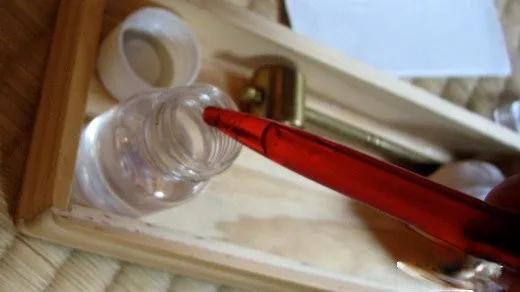7 Tips on Daily Maintenance of Japanese Katana Swords

1. The removal of the nails of Japanese katana swords
The eye nails are made of materials such as bamboo, horn or ivory, and the purpose is to fix the knife, so it must be removed. Most japanese katana swords have only one stud, and most of the current swords have two studs for safety. Orthodox nails, the direction is fixed, pull the nail from the end where the nail penetrates and push it hard, you can exit the nail, but it is not necessary to notice that the current knife is not necessarily. It's a pity that such little details were not noticed. Therefore, when removing the nail, look carefully, one end is larger and the other end is smaller, and you can pull out the nail by pushing from the small end. Some nails are very tight. At this time, auxiliary tools should be used to push out the nails.

2. Removing the handle of japanese katana swords
When removing the handle, pay attention to the blade facing forward, otherwise it will be dangerous. Japanese katana swords like dark red katana are very sharp, and a little carelessness can cause serious injury. First, clench the handle of the knife with the right hand and make a fist with the left hand, raise it to a height of about 30 cm above the right hand, aim at the tiger's mouth of the right hand holding the knife, and beat it down with moderate force. When you hit the tiger's mouth with your right hand, you will hear a crisp metallic sound, which is the pleasant sound of the cutting feather, the knife tang and the knife stem colliding with each other, indicating that you have succeeded. The stem (center) will jump out of the handle, and you can easily pull the knife out by holding the blade with two fingers of your left hand.
3. Powder for Japanese katana swords
The ingredients for flouring include animal bone meal, very fine grindstone powder, etc. Powdering is to remove old oil from the knife.
Hold the stem of the knife with your left hand, with the blade facing forward, and hold the powder stick in your right hand, and tap lightly on the knife body at an even interval of about three to five times. Personal experience is: if there is a lot of old oil, you can beat the powder several times, evenly spray the powder on the surface of the japanese katana swords blade, and leave it for a period of time to allow the powder to absorb the oil. The powder has a strong oil absorption capacity.
4. Erasing and powdering of Japanese katana swords
I have heard that powdering can sharpen the blade. If you use poor quality powder, you may accidentally scratch the blade. Therefore, in addition to being careful, you must also pay attention to the quality of the powder. Therefore, you must ask experienced seniors to guide you when it comes to sharpening the blade. Here, it is still recommended that you gently wipe off the powder with a booklet. When erasing, please pay attention: it must be wiped gently in one direction, do not wipe back and forth vigorously, otherwise the blade will be severely scratched. Usually powdering and wiping this step takes two to three times to completely remove the old oil.

5. Appreciation of Japanese katana swords
The knife that has been removed from the old oil is clean and shiny, and use this opportunity to admire the knife while checking the blade for any damage. The light source from the rear must be used to clearly see the blade, ground muscles, boiling, etc., so the purpose of holding the blade high is to prevent the light source from being blocked by your body.

6. Oiling of japanese katana swords
First pour a little bit of diced oil on a small piece of cotton cloth, and then wipe the blade evenly. After application, leave cool katanas on for about 15 to 20 minutes to allow the oil to dry, then use a large cotton cloth and a paper towel to remove excess oil. Fengshu paper itself does not absorb oil very much. The purpose of using Fengshu paper is to take advantage of its characteristics that it is not easy to leave small paper flakes, so as not to be left on the blade. At that time, the small paper flocs absorb moisture in the air and cause the blade to rust. Therefore, Fengshu paper is mostly used to wipe off the powder and remove the lint left by the cotton cloth.

7. Re-powder of japanese katana swords
Some people feel that after oiling, the brightness of the blade will be slightly worse, and then you can add powder. The powder only needs to be beaten once or twice, a small amount, and then removed with the paper. If you beat too much powder, the oil you just applied will be wiped off.
